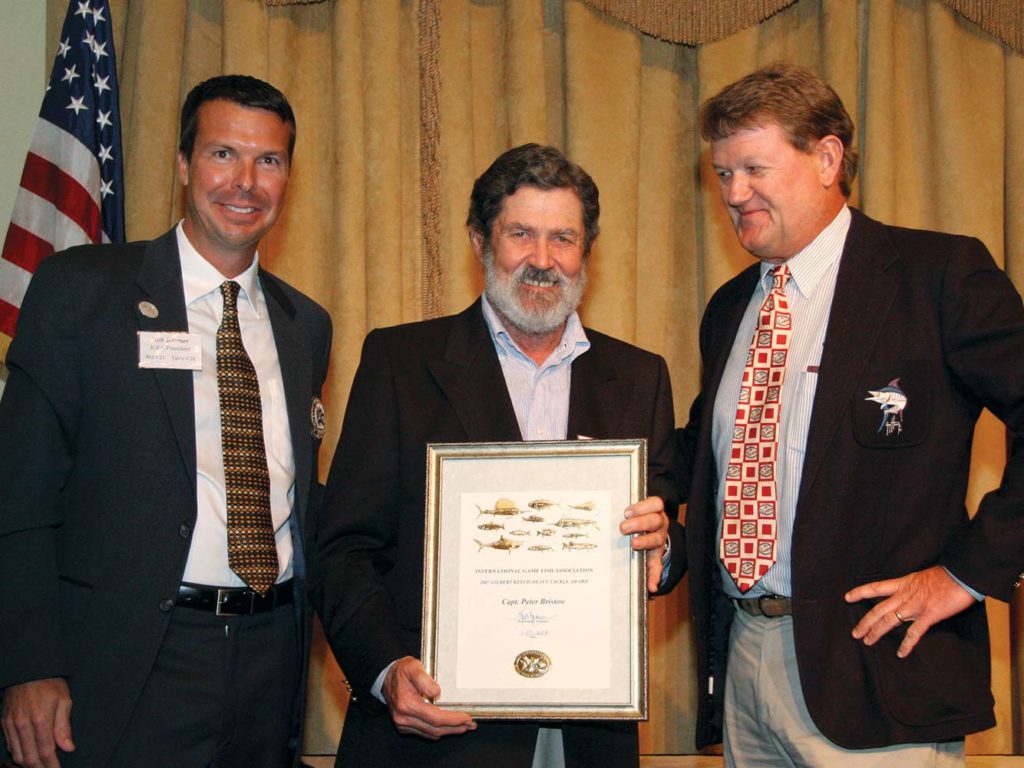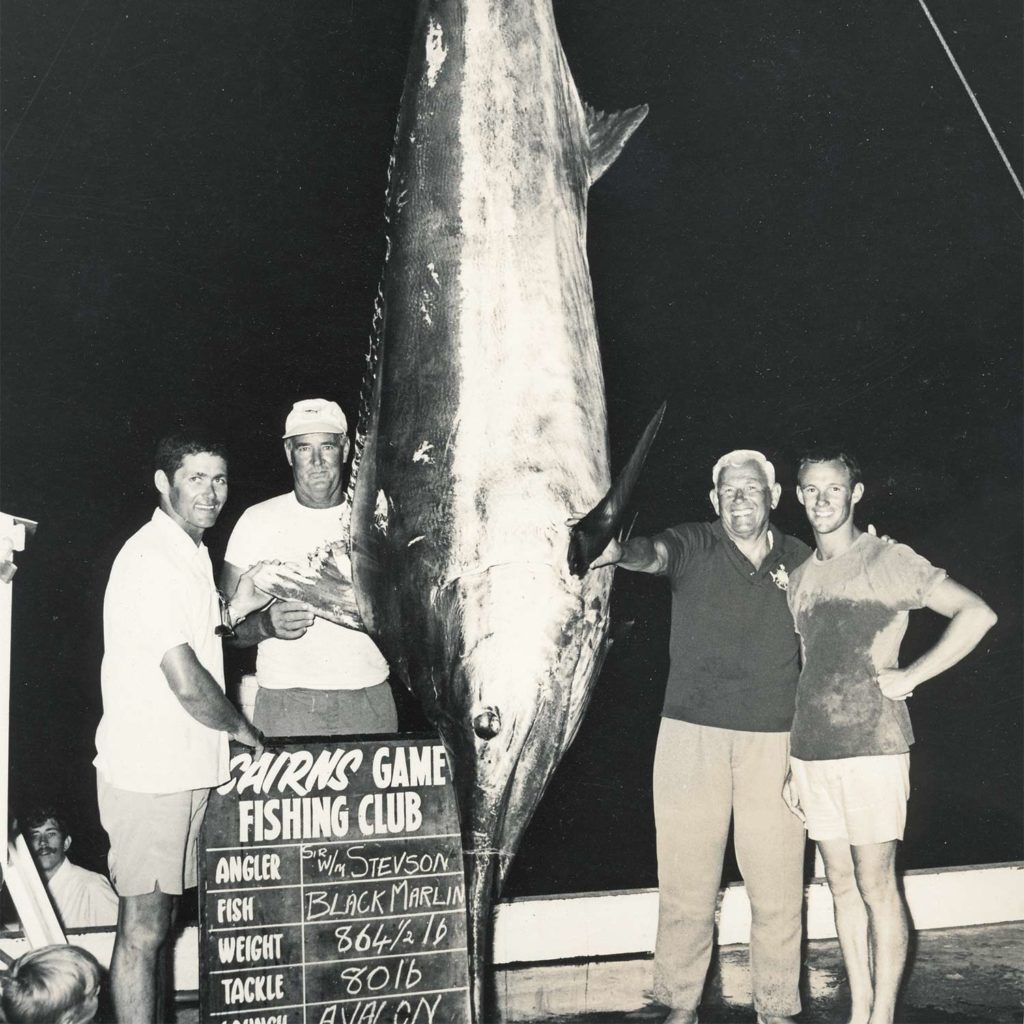
Special delivery: Sign up for the free Marlin email newsletter. Subscribe to Marlin magazine and get a year of highly collectible, keepsake editions – plus access to the digital edition and archives.
After nearly six decades, Australian skipper Capt. Peter Bristow is still on the hunt for giants. His amazing career will go down in the record books as the captain who has caught more big blacks and blues than anyone on the planet. He spent three decades working the Great Barrier Reef catching hundreds of huge black marlin, putting 52 over 1,000 pounds on the deck. In 1996, he decided to shift his talents to the Atlantic Ocean, working out of the Portuguese island of Madeira, where the seas are calm and the fish are big. At the ripe old age of 84, he’s still running a charter boat.
Q: How did you get involved in fishing?
A: I was born in Brisbane in 1938 and moved to Stradbroke Island in southern Queensland in my teens. I got involved in all kinds of angling before getting a job on a commercial fishing trawler. I enjoyed the physical, offshore boatwork for a couple of years before I heard about the giant black marlin that were being caught off Cairns. One was a world-record grander taken on Sea Baby by Capt. George Bransford in 1966. I had to go to Cairns to investigate.
Q: What was the first job you got?
A: I was with a group of guys from the Moreton Bay Game Fishing Club, so we went to Cairns and chartered a vessel called Marlan, skippered by Alan Collis. After a week of fantastic black marlin fishing, I managed to secure a job on Marlan for the following season. The size of the fish I experienced out on the reef changed my life forever. That was 1967, and there were only six boats in the entire fleet.

Q: Was the lack of charter vessels the reason you built your own boat?
A: It was. I started building the 38-foot Avalon in ’69, and she was finished for the start of the 1970 season. She was a great sea boat and could raise giant marlin one after another. In the ’73 season, we caught 192 blacks up to and over 1,000 pounds. Most were tagged, and quite a few big fish were weighed. Those numbers in a two-and-a-half-month season have never been beaten.
Watch: We show you how to rig one of the best baits for blue marlin: the swimming mackerel.
Q: Who was your most influential heavy-tackle angler?
A: Head and shoulders above anyone was American JoJo del Guercio and also Sir William Stevenson from New Zealand. They were both excellent heavy-tackle anglers, and they caught so many huge marlin. JoJo in particular was the best angler I ever worked with; he weighed 11 granders in just six seasons. He also released another seven definite granders, plus many others close to the mark.

Q: Remember the potential record sailfish we fought for nine hours?
A: I do. We were fishing on the old Salt Shaker, a 32-foot Blackfin with Jack Erskine and Bill Stoddard in the Morton Bay Game Fish Club’s Light Tackle Tournament out of Tangalooma in 1984. That was the biggest sailfish I have ever seen, and on 12-pound-test tackle, it was a potential world record. We had one shot in the dark, and I wanted to use a gaff, but the anglers wanted to tag it. That fish was over 300 pounds. After it was tagged, they realized their mistake, so we tried to get close again, but the line wore out. It was a long, wet trip back to Tangalooma.

Q: You moved from Cairns to Micronesia in 1992. Why the move?
A: After 24 years of chartering on the Great Barrier Reef, I felt I needed a change, and big blue marlin were on my mind. The Japanese longline fleet was catching lots of blue marlin in the deep trenches around Micronesia. Along with George Bransford, we set up a charter business on the island of Pohnpei.
Q: What happened?
A: There were plenty of fish to catch around Pohnpei, but it just wasn’t what I was looking for: great light-tackle fishing with plenty of small blues. When the news broke about all the giant blue marlin that were being caught around Madeira, it got me thinking about another adventure.

Q: So off you went.
A: We moved to Norfolk, England, in 1996, and my first job was to find a suitable boat to take over to Madeira. Buying a boat for gamefishing in the UK posed a problem because most vessels were only single screw and were also very expensive. I found a 40-foot ex-naval gunboat with twin diesel engines. There was a lot of work involved to convert it into a gamefishing boat, but after building Avalon from scratch in Australia, a major conversion didn’t worry me. Half the house was removed, and the cockpit was completely rebuilt. After I made a fighting chair, she was pretty much complete. I christened the vessel Katherine B, after my daughter.
Q: What year did you arrive in Madeira?
A: I shipped the boat to the island in 1997. Finding a berth in Funchal Harbor was difficult—boats were jammed in there like sardines, and the only spot left was in a tight corner. She’s still there today, in that same slip.

Q: How difficult was it changing techniques for blue marlin in the Atlantic?
A: The biggest challenge in going from natural baits to lures was the drag settings. Even on 130, you couldn’t use 45 pounds of strike drag like we used on the blacks. That pressure on a big blue had only one outcome: a busted line. It took a while to get used to setting only 12 pounds of strike drag.
Q: You also modified your lures?
A: I found many of the standard lures ran all over the place, and I wanted a lure to run upright so that I could set the point of the hook facing up. This gives it a much better chance of grabbing the roof of the marlin’s mouth, or in the corner of the jaw. So I just weighted the bottom of the lure heads so that they would swim the way I wanted them to. It worked out well.

Q: I know you tag all your marlin in Madeira, but what would you say is the biggest one you’ve released there?
A: It’s hard to say with really big blue marlin because they carry their weight all the way back to the tail. Some have been well over 1,200 pounds, I’d reckon.
Read Next: Learn more about the Costa Offshore World Championship, including how to qualify to participate.
Q: At 84, do you ever think about retiring?
A: While I can still get down to the harbor and get on that boat, I’ll keep fishing. I’m doing what I love.







